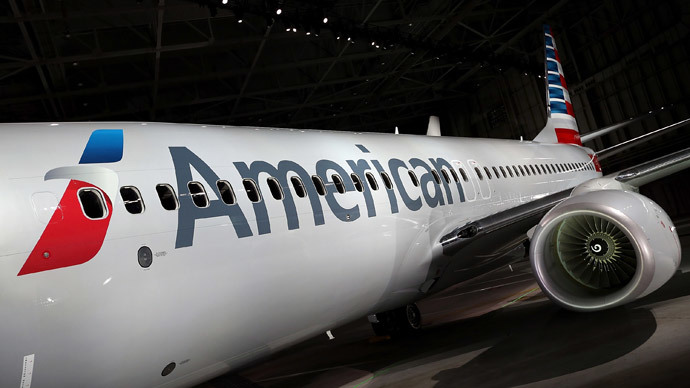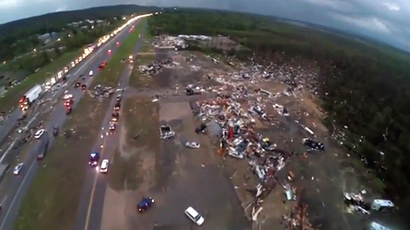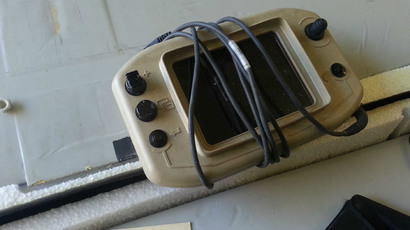Drone, US jet narrowly avoided air disaster earlier this year

An unmanned aerial vehicle nearly collided with a small US commercial flight in March in the skies above Florida, a Federal Aviation Administration official has said, highlighting a lingering concern about drones interfering with other aviation.
The flight was a small, 50-seat express flight operated by American Airlines flying approximately 2,300 feet above Tallahassee Regional Airport on the Florida panhandle. Jim Williams, the head of the FAA’s unmanned aircraft office, told a conference of drone enthusiasts Thursday that the flight’s pilot and crew witnesses a camouflaged-painted UAV skim by the aircraft, narrowly avoiding what could have been trouble for all on board the flight.
“He reported what appeared to be a small, remotely piloted aircraft at approximately 2,300 feet in the air,” Williams told the audience at the Small Unmanned Systems Business Exposition. “The airline pilot said that he thought the [drone] was so close to his jet that he was sure he had collided with it.”
The Wall Street Journal was the first to report the story Friday, adding that current guidelines stipulate that manned aircraft should be no closer than 1,000 feet together vertically and several miles apart laterally.
Private drone pilots who operate their craft at such a height could face a $10,000 fine. The American Airlines pilot described the UAS as a fixed-wing aircraft that was more similar to a model than a quadcopter more frequently associated with commercial drone use in the future. The identity of the pilot in this case is still unknown.
An inspection of the plane found no damage or evidence that there was a collision.
“The risk for a small (drone) to be ingested into a passenger airline engine is very real,” Williams went on. “Imagine a metal-and-plastic object, especially that big lithium battery, going into a high-speed turbine engine. The results could be catastrophic.”
The incident appears to be the first time that a drone has been reported flying so close to a commercial jet, although a flight making its approach to John F. Kennedy International Airport in New York City last year reported seeing a drone flying within 200 feet.
Observers have compared the potential results to a collision with the 2009 Miracle on the Hudson, in which a flock of geese flew into the engine of a US Airways flight and forced the pilot to conduct an emergency landing on the water.
The FAA did not return a request for comment from multiple outlets, although American Airlines spokesman Matt Miller told USA Today the near-miss is currently under investigation.
“The safety of our passengers and crew is top priority,” he said. “Any information will be shared with the FAA as part of our normal procedures, and we will not comment on any matter that may be under investigation.”
Congressional lawmakers frustrated by the FAA’s inaction on updating its stance on commercial and private drones, have given the regulatory agency a September 2015 deadline to come up with new guidelines that will clear up questions that still exist in the public and aviation industry.
Events like the one in question are only expected to become more frequent as hobbyists and businesses alike explore new ways of transport. Gretchen West, executive vice president for drone lobby group Association for Unmanned Vehicle Systems International, told the Wall Street Journal’s Jack Niclas the confusion must be cleared up soon.
“A lot of people already fly [drones] without rules and regulation. It’s almost a free for all,” she said, adding that the FAA “is painting a picture that this technology could threaten safety, but that goes back to the FAA. They have to come up with the rules to create a safe environment.”














